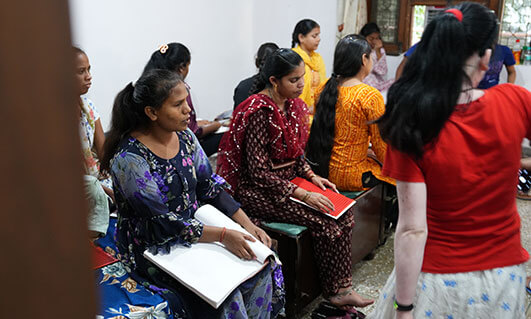
Blindness and visual impairment continue to be significant global challenges, impacting millions of lives. While advancements in medical science have led to various treatments and assistive technologies, the causes and challenges associated with blindness remain complex and multifaceted. In this blog, we will explore the primary causes of blindness, the obstacles faced by visually impaired individuals, and how empowering initiatives and support systems are helping to overcome these challenges.
The Causes of Blindness
Blindness can occur due to a variety of reasons, ranging from genetics to environmental factors. Understanding these causes is crucial in addressing the issue effectively.
1. Genetic Conditions
Certain genetic disorders, such as Retinitis Pigmentosa and Leber Congenital Amaurosis, can cause progressive blindness. These conditions are inherited and affect the retina, leading to a gradual loss of vision. Early detection and genetic counseling can help individuals manage their condition and prevent the spread of these disorders within families.
2. Age-Related Macular Degeneration (AMD)
AMD is one of the leading causes of blindness in older adults. It affects the macula, the part of the eye responsible for sharp central vision. As the population ages, AMD’s prevalence continues to rise, making it a critical area of focus for eye health research and intervention.
3. Cataracts
Cataracts are another leading cause of blindness, particularly in developing countries. This condition occurs when the eye’s lens becomes cloudy, impairing vision. Fortunately, cataracts can be treated with relatively simple surgery, but access to healthcare remains a barrier in many parts of the world.
4. Diabetic Retinopathy
People with diabetes are at higher risk of developing diabetic retinopathy, a condition that damages the blood vessels in the retina. If left untreated, diabetic retinopathy can lead to blindness. Early detection and proper management of diabetes are essential in preventing vision loss.
5. Trauma and Accidents
Injuries to the eyes from accidents or trauma can lead to permanent blindness. Preventive measures, such as wearing protective eyewear, are critical in reducing the risk of such injuries.
The Challenges Faced by Visually Impaired Individuals
While the causes of blindness are diverse, the challenges faced by visually impaired individuals are common. Overcoming these challenges requires a multi-faceted approach that includes medical treatment, technological advancements, and societal support.
1. Limited Access to Education and Employment
One of the most significant challenges for visually impaired individuals is access to education and employment opportunities. Many educational institutions and workplaces are not equipped to support individuals with visual impairments, making it difficult for them to reach their full potential. Inclusive education and workplace accommodations are essential for empowering individuals and promoting their independence.
2. Lack of Accessible Infrastructure
Navigating the physical environment can be a daily struggle for those who are blind or visually impaired. Lack of accessible infrastructure, such as tactile paving, braille signs, and audio cues, can make it difficult to move around independently. Cities and communities need to invest in making public spaces more accessible to ensure equal opportunities for all.
3. Social Stigma and Isolation
Visually impaired individuals often face social stigma and isolation due to misconceptions about their abilities. This can lead to mental health challenges such as depression and anxiety. Raising awareness and promoting social inclusion is essential in combating this stigma and creating a more supportive and understanding society.
4. Financial Constraints
For many visually impaired individuals, the cost of assistive devices, healthcare, and specialized services can be prohibitive. Financial support and affordable access to resources are crucial for enabling individuals to lead independent and fulfilling lives.
Empowering Visually Impaired Individuals
Despite these challenges, there are numerous initiatives aimed at empowering visually impaired individuals and providing them with the tools they need to thrive.
1. Assistive Technologies
Advancements in assistive technologies, such as screen readers, braille displays, and smart glasses, have revolutionized the lives of visually impaired individuals. These technologies enable them to access information, communicate, and navigate the world with greater ease and independence.
2. Supportive Communities and Organizations
Many non-profit organizations and support groups play a pivotal role in empowering visually impaired individuals. These organizations provide services such as counseling, vocational training, and social integration programs, helping individuals overcome challenges and lead more fulfilling lives.
3. Inclusive Education and Employment
Inclusive education and workplace policies are critical in providing visually impaired individuals with the opportunity to succeed. Schools and employers are increasingly adopting inclusive practices, such as providing accessible learning materials and offering workplace accommodations like screen readers and braille keyboards.
4. Public Awareness Campaigns
Public awareness campaigns are essential in challenging stereotypes and promoting a more inclusive society. By educating the public about the challenges faced by visually impaired individuals, we can help create a more supportive and empathetic environment.
Conclusion
Blindness and visual impairment present significant challenges, but with the right support systems in place, individuals can lead empowered and fulfilling lives. By addressing the root causes of blindness, improving access to education and employment, and promoting social inclusion, we can create a world where visually impaired individuals are given the tools and opportunities to succeed. It is through collective action, technological innovation, and societal change that we can truly empower the lives of those affected by blindness.





